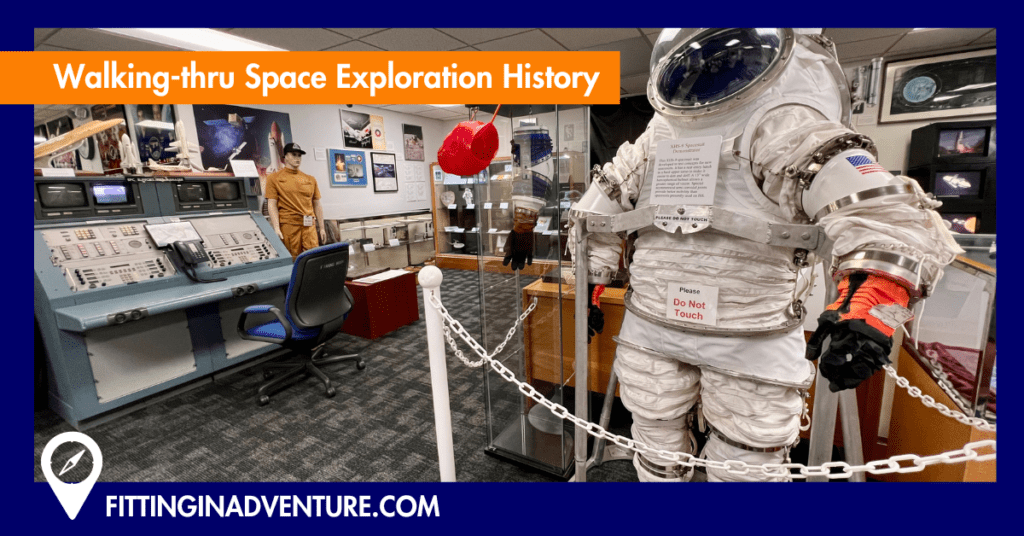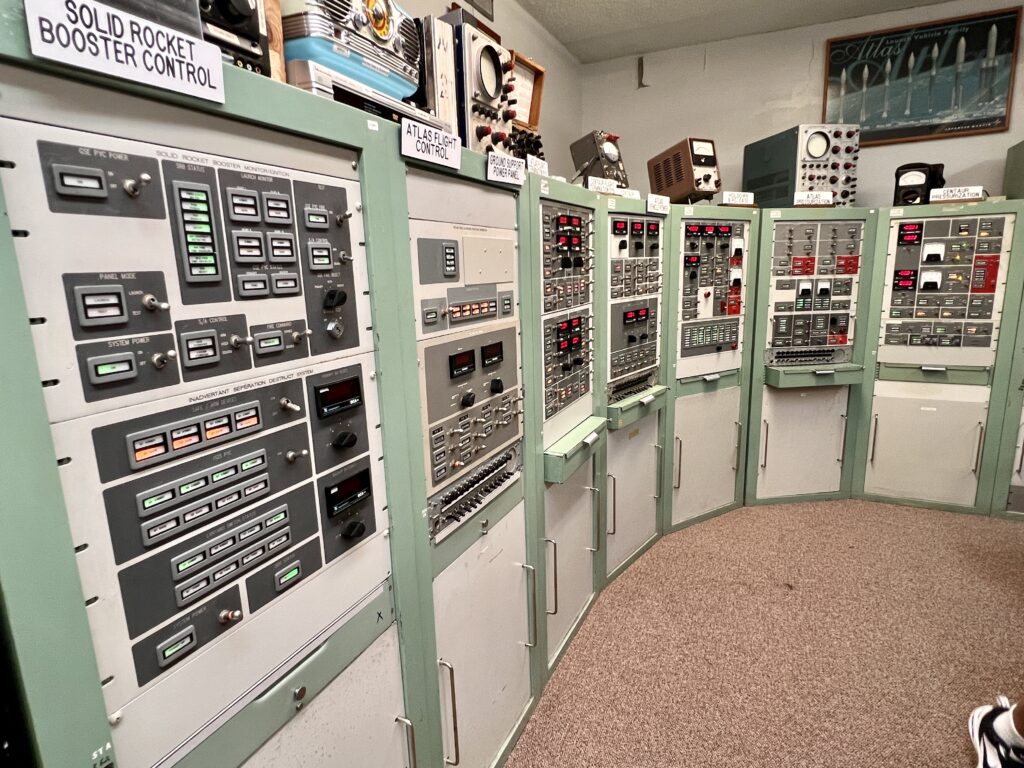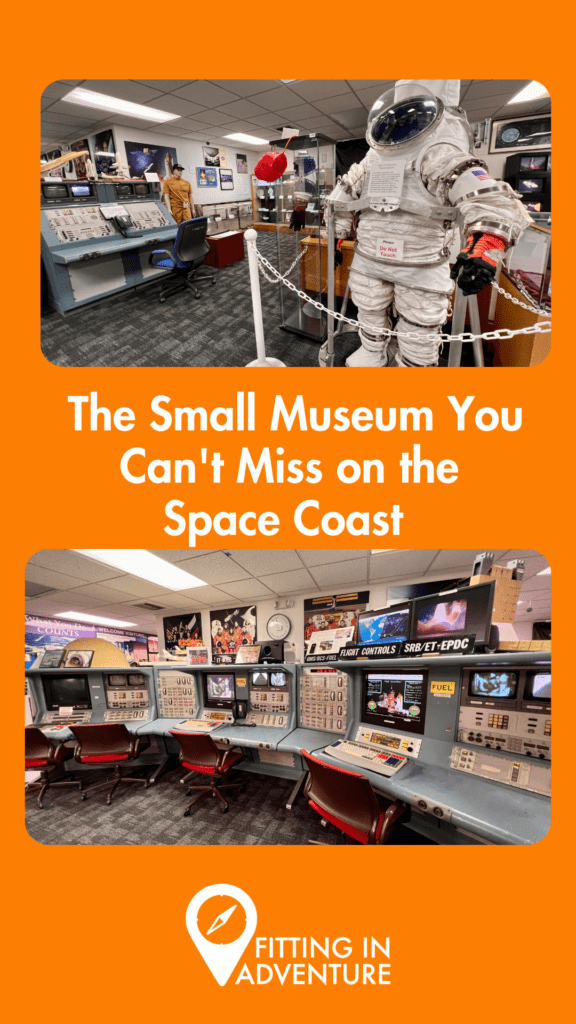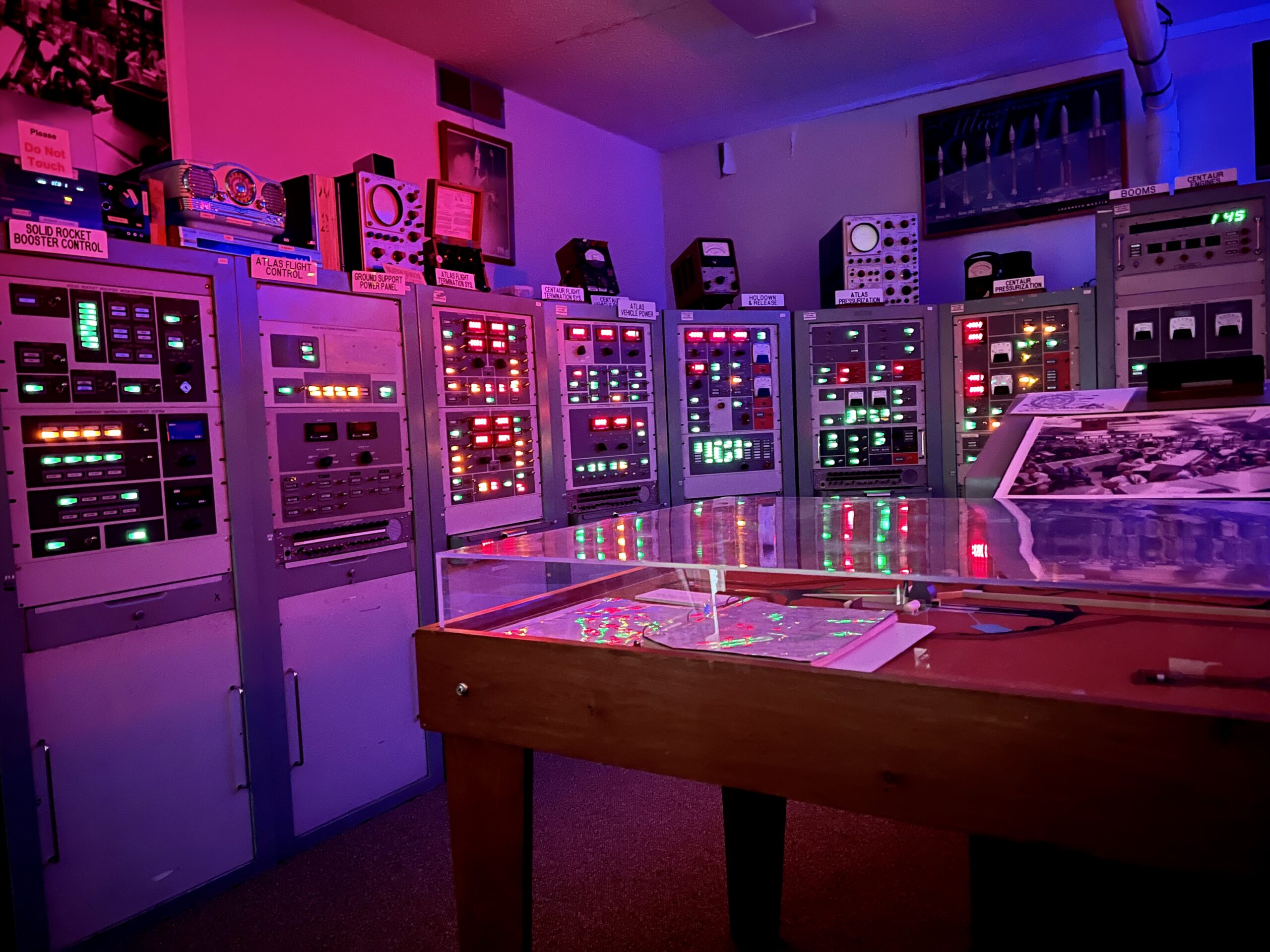Tucked into an unassuming downtown Titusville building is the American Space Museum. While many visitors flock to the Space Coast for its larger space neighbor, Kennedy Space Center the American Space Museum in Titusville needs to be a part of your visit. Knowledgeable docents lead you through the history of space exploration and artifacts related to the Space Race, the Space Shuttle program, and the Apollo missions.
Disclosure: Some links on our site are affiliate links. If you purchase a linked item, we will make a commission, at no extra charge to you.
Table of Contents
Women of Space
From the earliest days of NASA, women have made significant contributions to the field, both in the U.S. and around the world. These contributions are highlighted in the American Space Museum’s Women of Space exhibit.
Notable female astronauts include Valentina Tereshkova, who became the first woman to fly in space in 1963, and Sally Ride, who became the first American woman to fly in space in 1983.
In recent years, NASA has continued to focus on increasing the representation of women in its astronaut corps and in leadership positions within the organization. This includes initiatives to encourage the study of science, technology, engineering, and mathematics (STEM) fields, as well as programs that provide support and mentorship to women in the early stages of their careers in space-related industries. NASA is also working to increase the number of female astronauts on its missions, with the goal of sending the first woman to the moon in 2024.

Mercury & Gemini Gallery
NASA’s Mercury and Gemini programs were two of the earliest human spaceflight programs in US history. The Mercury program, which ran from 1958 to 1963, was the first American effort to send humans into space and helped to establish the U.S. as a leader in the space race against the Soviet Union.
Following the Mercury program, the Gemini program ran from 1961 to 1966. The program aimed to test new technologies and procedures that would be necessary for longer, more complex missions to the moon. Designed to carry two astronauts, the capsules allowed for more advanced in-orbit experiments and provided the ability to practice spacewalking and rendezvous techniques. The Gemini program was critical in paving the way for the Apollo missions that would eventually take astronauts to the moon.
The museum highlights artifacts and stories from the launchpads in this gallery.

Apollo Gallery
NASA’s Apollo program was a series of human spaceflight missions aimed at landing a man on the moon and returning him safely to Earth. Initiated by President John F. Kennedy in response to the Soviet Union’s early successes in space. Running from 1961 to 1975, the Apollo program was seen as a critical step in establishing American dominance in the space race.
The Apollo missions tested new technologies and techniques while pushing the boundaries of what was possible in human spaceflight. The program involved a series of missions, each of which built on the lessons learned from the previous mission. The final mission, Apollo 11, was the first to land humans on the moon and remains one of the most memorable moments in human history. Astronauts Neil Armstrong and Edwin “Buzz” Aldrin spent several hours on the moon’s surface, conducting experiments and gathering data that would help scientists understand more about the moon and its formation.
Space Shuttle Gallery
Running from 1981 to 2011 the Space Shuttle Program is one of the most significant human spaceflight programs in our history. Differing from previous space programs, the Space Shuttle was unique in that it was the first reusable spacecraft, capable of being launched, flown in space, and returned to Earth for reuse on future missions.
The program had several goals, including the construction and maintenance of the International Space Station (ISS), the deployment of satellites, and the conduct of scientific experiments in microgravity. In its 30-year history, the Space Shuttle Program flew 135 missions. The gallery is highlighted with a shuttle control panel and numerous models and artifacts.

Florida’s Space Coast
Located on the east coast of Florida, Cape Canaveral has played a pivotal role in the history of space exploration. First used as a launching site for military missiles during the 1950s and quickly became America’s Space Coast. The cape’s location provides a favorable launch environment, with favorable wind patterns and access to the Atlantic Ocean for landing and recovery of spacecraft.
The early space launches from Cape Canaveral were part of the US and Russian Space Race and were marked by a series of firsts, including the first American astronaut in space, Alan Shepard, and the first American to orbit the Earth, John Glenn.
Today, Cape Canaveral continues to play a central role in space exploration, serving as the launching site for NASA’s Artemis program, which aims to return humans to the moon by 2024.
How is the American Space Center different from Kennedy Space Center?
While nearby, Kennedy Space Center Visitor’s Center is a must-visit, this small museum is its little brother/sister and is a must not miss on your next trip to the Space Coast. Kennedy Space Center is primarily focused on the future of space exploration with a few historic pieces. Established in 1996 with a mission to preserve the history of the American Space Program, The American Space Museum offers a walk through historic relics from the days of Apollo to the shuttle days.
Located at 308 Pine Street in Titusville, Florida.
Tours are available self-led and docent-led. (Tip: Always accept a docent-led tour when available.)
Check the American Space Museum site for the latest ticket information and hours.
YouTube: Visit the American Space Museum with us
Don’t forget to subscribe on YouTube for future adventures!


